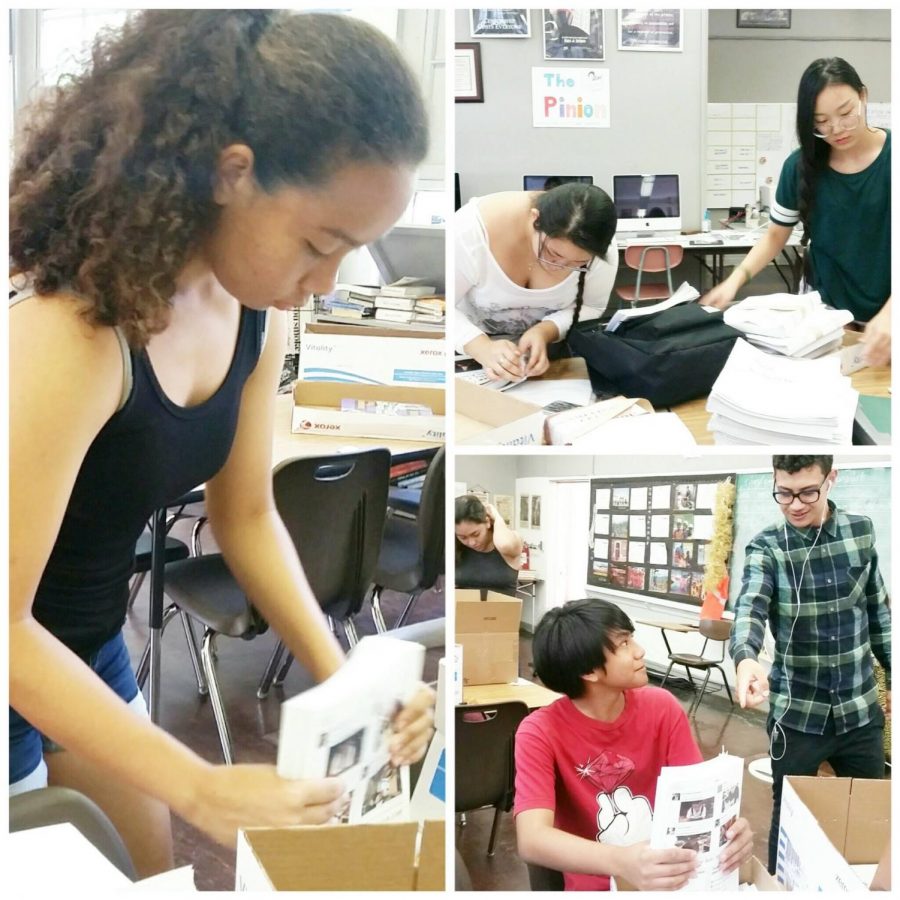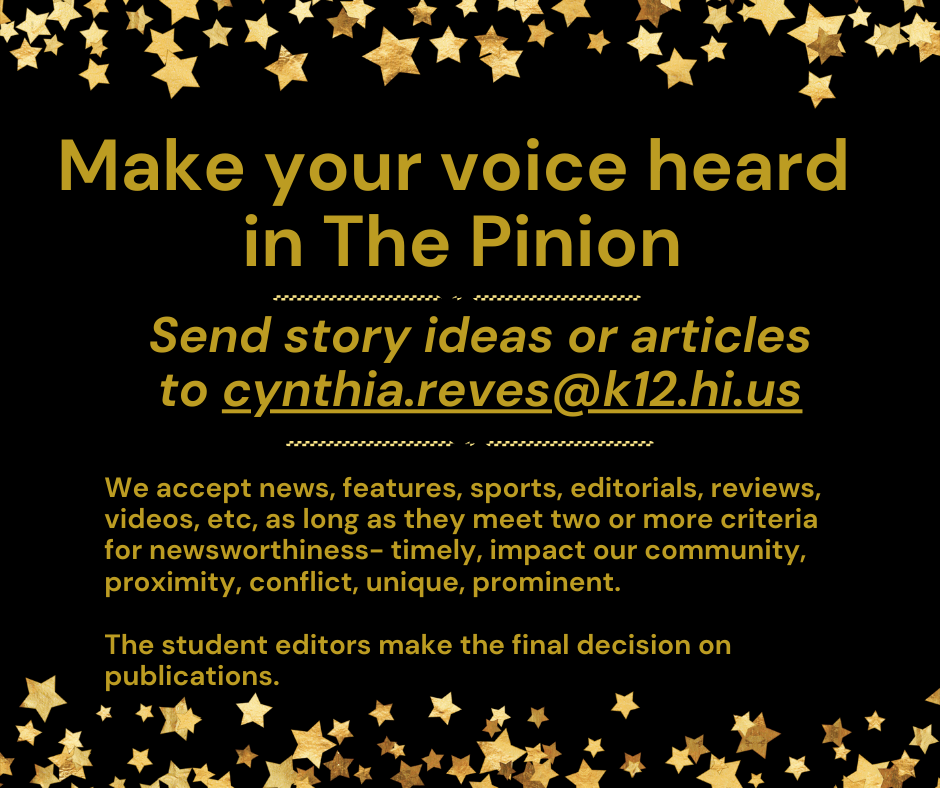Life as a student journalist: TIPCUP and the LQTQ format
Pinion staffers from 2017 bundle copies of the paper to give out to students and staff.
April 22, 2020
Elements of Newsworthiness
For an article to be considered newsworthy, it must meet at least three TIPCUP standards.
Timeliness – is the story published around when an event took place or is going to take place? After all, the word “news” has the word “new” in it.
Impact – will the story have an impact on readers or viewers? People care about things that affect their lives.
Proximity – did the story take place nearby? Will it affect your community? Stories about an event taking place nearby will make the reader interested in learning about their community.
Conflict – are there two sides to the story? Writing for both sides of the argument on a subject that is concerning creates empathy.
Unique/Unusual – does the story idea stand out from other stories? Writing about new topics can lead readers or viewers to become interested. What makes the story idea interesting; what is the “wow” factor?
Prominence – is there an important or well-known person in the article? Credibility increases the news value of the story.
LQTQ Format
Lede – there are two types of ledes: “tell me the news” and “tell me a story.” Good ledes are concise, clear, and colorful.
Quote – when a source has spoken to introduce the topic of the story. Quotes are what carries the story, along with transitions.
Transition – talks about the main idea of the next quote or introduces a new source.
Quote – the LQTQ format starts off with the lede and then the quotes and transitions can be as long as the writer wants it to be (e.g. LQTQTQ…). It’s important that the story ends with a good quote that summarizes the story (the kicker quote).






